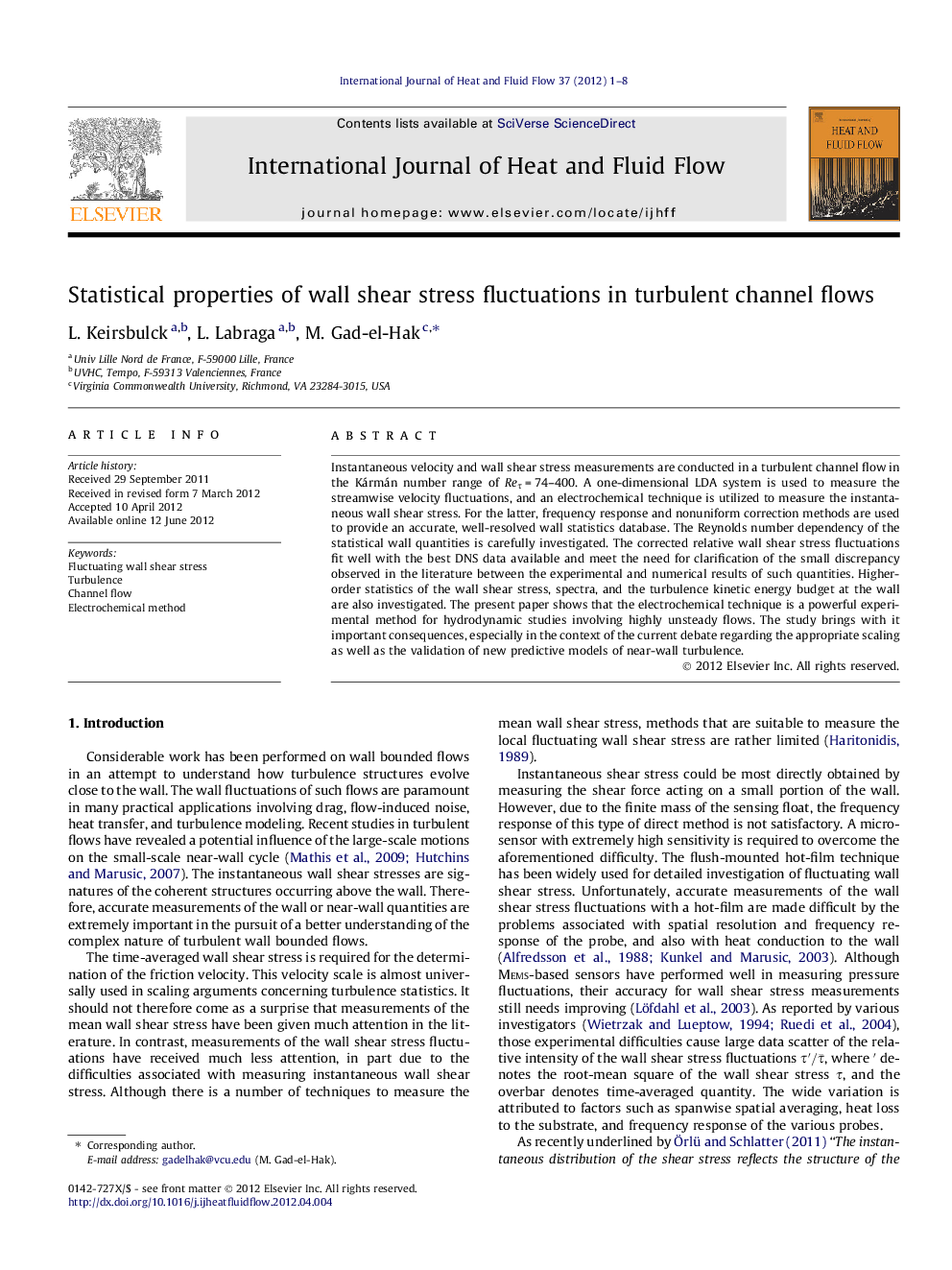| Article ID | Journal | Published Year | Pages | File Type |
|---|---|---|---|---|
| 655504 | International Journal of Heat and Fluid Flow | 2012 | 8 Pages |
Instantaneous velocity and wall shear stress measurements are conducted in a turbulent channel flow in the Kármán number range of Reτ = 74–400. A one-dimensional LDA system is used to measure the streamwise velocity fluctuations, and an electrochemical technique is utilized to measure the instantaneous wall shear stress. For the latter, frequency response and nonuniform correction methods are used to provide an accurate, well-resolved wall statistics database. The Reynolds number dependency of the statistical wall quantities is carefully investigated. The corrected relative wall shear stress fluctuations fit well with the best DNS data available and meet the need for clarification of the small discrepancy observed in the literature between the experimental and numerical results of such quantities. Higher-order statistics of the wall shear stress, spectra, and the turbulence kinetic energy budget at the wall are also investigated. The present paper shows that the electrochemical technique is a powerful experimental method for hydrodynamic studies involving highly unsteady flows. The study brings with it important consequences, especially in the context of the current debate regarding the appropriate scaling as well as the validation of new predictive models of near-wall turbulence.
► Accurate measurements of instantaneous wall shear stress are conducted. ► LDA is used to measure near-wall streamwise velocity. ► Electrochemical probe is used to measure wall shear stress. ► Frequency response and non-uniform correction methods were used to provide an accurate, well-resolved wall-statistics database. ► Reynolds number dependency of the statistical wall quantities is investigated.
